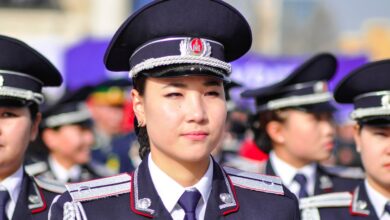Are Women in The Draft: Draft Registration, Draft Eligibility For

In recent years, discussions surrounding gender equality have permeated various facets of society, sparking debates and inquiries into traditionally male-dominated domains. One such domain that has come under scrutiny is the military draft, a practice that has historically excluded women. The question of whether women should be included in the draft has become a focal point of discourse, prompting a reevaluation of societal norms and gender roles within the context of national defense.
Women Draft Registration
Women draft registration has been a topic of ongoing debate and discussion, particularly in the context of gender equality and the evolving role of women in the armed forces. While historically, military conscription has predominantly targeted men, there has been a growing call for gender-neutral draft registration to reflect the changing dynamics of modern societies.
Background: The Selective Service System in the United States, responsible for maintaining a registry of potential draftees, has traditionally required only men to register upon turning 18. However, as societal norms shift and women’s participation in various military roles expands, the question of whether women should be included in draft registration has gained prominence.
Recent Developments: In recent years, there has been a notable shift in attitudes toward gender inclusivity in military service. The National Defense Authorization Act for Fiscal Year 2022, passed in the United States, includes provisions requiring women to register for the Selective Service System, marking a significant departure from the previous male-only requirement.
Arguments in Favor: Proponents of women draft registration argue that it promotes equality and aligns with the principles of equal opportunities and responsibilities for all citizens. They contend that including women in the draft pool ensures a fair and inclusive system, reflecting the contemporary understanding of gender roles in society.
Arguments Against: Opponents express concerns about the physical and logistical challenges associated with integrating women into the draft. Questions about the impact on military readiness and the potential strain on existing infrastructures have been raised. Some argue that the focus should be on enhancing voluntary military service opportunities for women rather than enforcing compulsory registration.
Selective Service Women
Selective Service, traditionally a male-only requirement for military conscription in the United States, has been a subject of ongoing debate. The inclusion of women in the Selective Service System (SSS) has sparked discussions about gender equality, military service, and societal expectations.
Arguments in Favor:
| Argument | Explanation |
|---|---|
| Gender Equality | Advocates argue that including women in Selective Service promotes gender equality, aligning with modern principles of equal opportunities. |
| Diverse Military Force | Supporters believe that incorporating women into the draft contributes to a more diverse and inclusive military, enhancing its capabilities and adaptability. |
| Legal Equality | Some argue that in an era where women serve in various combat roles, equal legal obligations, including Selective Service registration, should be upheld. |
Arguments Against:
| Argument | Explanation |
|---|---|
| Physiological Differences | Critics point to physical differences between men and women, suggesting that the rigors of military service may be challenging for women in certain roles. |
| Voluntary Service | Opponents argue that military service should remain voluntary, with individuals choosing to enlist based on their personal interests and capabilities. |
| Changing Nature of Warfare | Some contend that the nature of modern warfare, relying heavily on technological advancements, diminishes the relevance of large-scale conscription. |
Implications and Future Considerations: The ongoing discourse surrounding Selective Service for women reflects broader societal shifts in perceptions of gender roles and the evolving nature of military service. As the conversation progresses, policymakers must consider the potential impact on national defense, gender dynamics, and individual freedoms.
Draft Eligibility For Women
Draft eligibility for women is a topic gaining increased attention as societies evolve and reassess traditional gender roles. Historically, military drafts were predominantly male-centric, reflecting societal norms and perceptions. However, contemporary discussions have emerged around the inclusion of women in draft systems, challenging traditional perspectives and advocating for gender equality in national defense obligations.
Current Status: As of my last knowledge update in January 2022, the eligibility criteria for military drafts varied globally. In some countries, women were not subject to conscription, while others implemented gender-neutral policies. The United States, for example, opened all military positions to women in 2015, prompting debates about whether women should also be eligible for the draft.
Debates and Perspectives: Advocates for gender-neutral draft policies argue that equality should extend to national defense responsibilities. They contend that in an era of evolving military roles and increasing recognition of women’s contributions in armed forces, draft eligibility should be based on capabilities rather than gender.
On the other hand, opponents express concerns about the physical demands of combat roles and potential disruptions to societal norms. The debates encompass discussions about the role of women in the military, the evolving nature of armed conflict, and the necessity of adjusting draft policies to reflect contemporary values and realities.
International Variances: Draft eligibility for women is not uniform across countries. Some nations have implemented gender-neutral conscription policies, while others maintain traditional distinctions. Understanding the international landscape provides valuable insights into the diverse approaches taken by different societies regarding women’s roles in national defense.
Gender Equality in Military Draft
Gender equality in military draft refers to the ongoing debate surrounding the inclusion of both men and women in compulsory military service. Historically, military conscription has predominantly targeted males, but contemporary discussions aim to address and rectify gender disparities in this area.
Arguments for Gender Equality:
| Argument | Explanation |
|---|---|
| 1. Equal Rights and Opportunities | Advocates argue that gender equality demands equal rights and opportunities, including shared responsibilities in defending the nation. |
| 2. Diverse and Inclusive Defense Forces | Inclusion of both genders contributes to diverse perspectives, skills, and capabilities within the military, enhancing overall effectiveness. |
| 3. Changing Roles in Society | Evolving societal norms challenge traditional gender roles, emphasizing the need for equality in all aspects, including national defense. |
Arguments Against Gender Equality:
| Argument | Explanation |
|---|---|
| 1. Physical and Biological Differences | Opponents highlight physiological differences between genders, arguing that men may have certain physical advantages in combat situations. |
| 2. Potential Impact on Military Efficiency | Concerns are raised about the potential impact on military efficiency, suggesting that mixed-gender units might face challenges in cohesion and performance. |
| 3. Voluntary Service as an Alternative | Some propose maintaining the voluntary nature of military service, allowing individuals to choose their level of involvement rather than enforcing a draft for both genders. |
Current Status and Future Outlook: As of [insert current date], the inclusion of women in military drafts varies globally. Some nations have embraced gender-neutral conscription, while others maintain traditional practices. The ongoing discourse reflects the complex intersection of societal norms, military strategy, and evolving perspectives on gender roles.
Conscription For Women in The United States
Conscription, commonly known as the draft, has been a longstanding practice in the United States, predominantly involving men. However, the debate surrounding conscription for women has gained prominence in recent years. This topic raises questions about gender equality, national defense, and societal norms.
Historical Context: The Selective Service System, established in 1917, has been the primary mechanism for drafting individuals into the U.S. military during times of need. Traditionally, this system has exclusively applied to men. The historical roots of male-only conscription can be traced back to societal perceptions of gender roles and capabilities.
Changing Dynamics: Advocates for gender equality argue that in contemporary times, where women actively serve in various military roles, conscription should not be limited to men. They assert that excluding women from the draft perpetuates gender stereotypes and denies women the opportunity to contribute equally to national defense.
Legal Framework: As of my last knowledge update in January 2022, the U.S. Congress has taken steps toward addressing this issue. In 2021, the National Defense Authorization Act (NDAA) established a bipartisan commission to examine the feasibility and implications of extending the draft to include women. This reflects a significant shift in the legal landscape regarding conscription in the United States.
Public Opinion: Public sentiment on conscription for women is diverse. While some argue that equal rights should extend to military service obligations, others express concerns about the physical demands and potential impact on family dynamics. Bridging this gap in public opinion is crucial for any potential legislative changes.




Considering the recent discussions about including women in the draft, I think it’s a significant step towards gender equality in military service. However, it also raises important questions about the roles and responsibilities of women in combat situations.